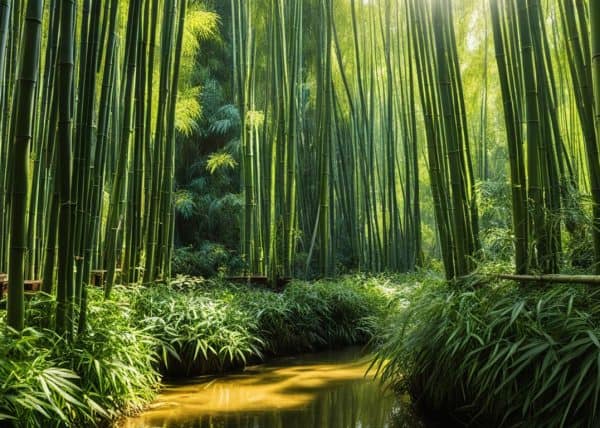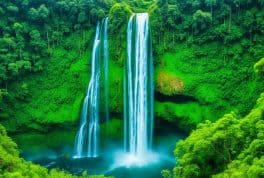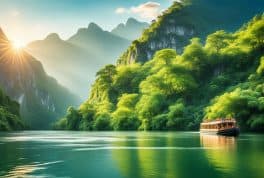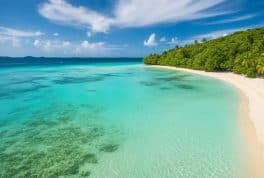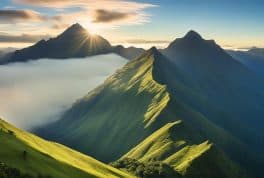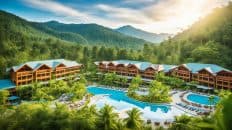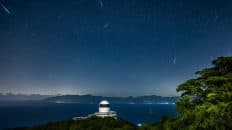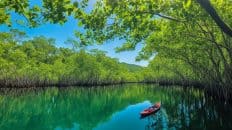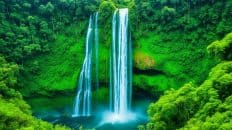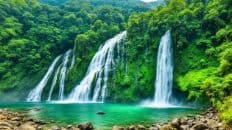Mindoro Island
Mindoro Island, a gem in the Philippine archipelago, is renowned for its stunning landscapes and rich cultural heritage. Divided into Oriental and Occidental regions, it offers a mix of pristine beaches, such as Puerto Galera, and rugged terrains like Mount Halcon. Home to the indigenous Mangyan people and the unique Mindoro tamaraw, Mindoro is a paradise for nature enthusiasts and culture seekers alike.
Top 10 Things to see in Mindoro
- Puerto Galera: Famous for its stunning beaches such as White Beach and Sabang Beach, Puerto Galera is also a renowned diving destination with vibrant coral reefs.
- Apo Reef Natural Park: The world's second-largest contiguous coral reef system and a diver's paradise, Apo Reef is known for its rich marine biodiversity.
- Mount Halcon: A challenging destination for trekkers and adventure enthusiasts, Mount Halcon is Mindoro’s highest peak, offering breathtaking views and rich biodiversity.
- Tamaraw Falls: Located near Puerto Galera, this scenic waterfall is a great spot for picnics and enjoying nature.
- Mangyan Village: Experience the unique culture of the indigenous Mangyan people, known for their traditional crafts and simple way of life.
- Bulalacao: A less-crowded destination with beautiful islands and beaches, perfect for those seeking tranquility and unspoiled nature.
- Naujan Lake National Park: Home to diverse wildlife and the largest lake on the island, it's a great spot for bird watching and nature photography.
- Pandan Island: A small private island near Sablayan, Pandan Island is ideal for snorkeling, diving, and enjoying serene beach vibes.
- Infinity Farm in Baco: A beautiful natural attraction featuring cascading waterfalls and refreshing natural pools.
- Alibatan Island: Known as Target Island, this small island offers pristine beaches, clear waters, and peaceful surroundings, perfect for relaxation and swimming.
Guides and Tours
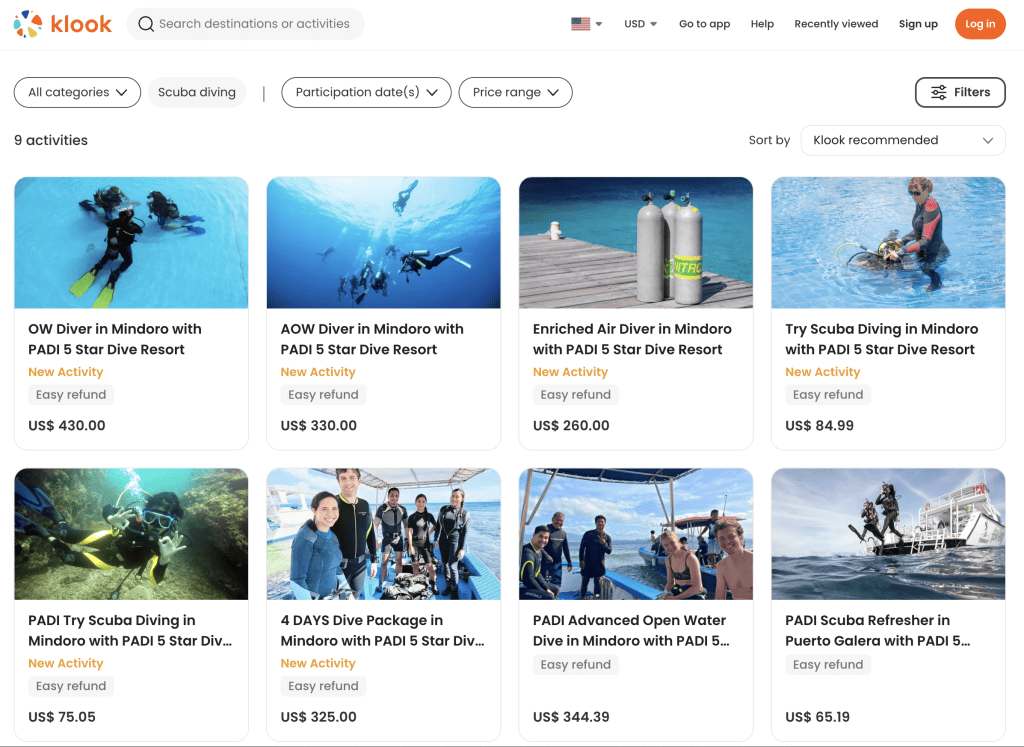
Cities on Mindoro
- Calapan City
- Puerto Galera City
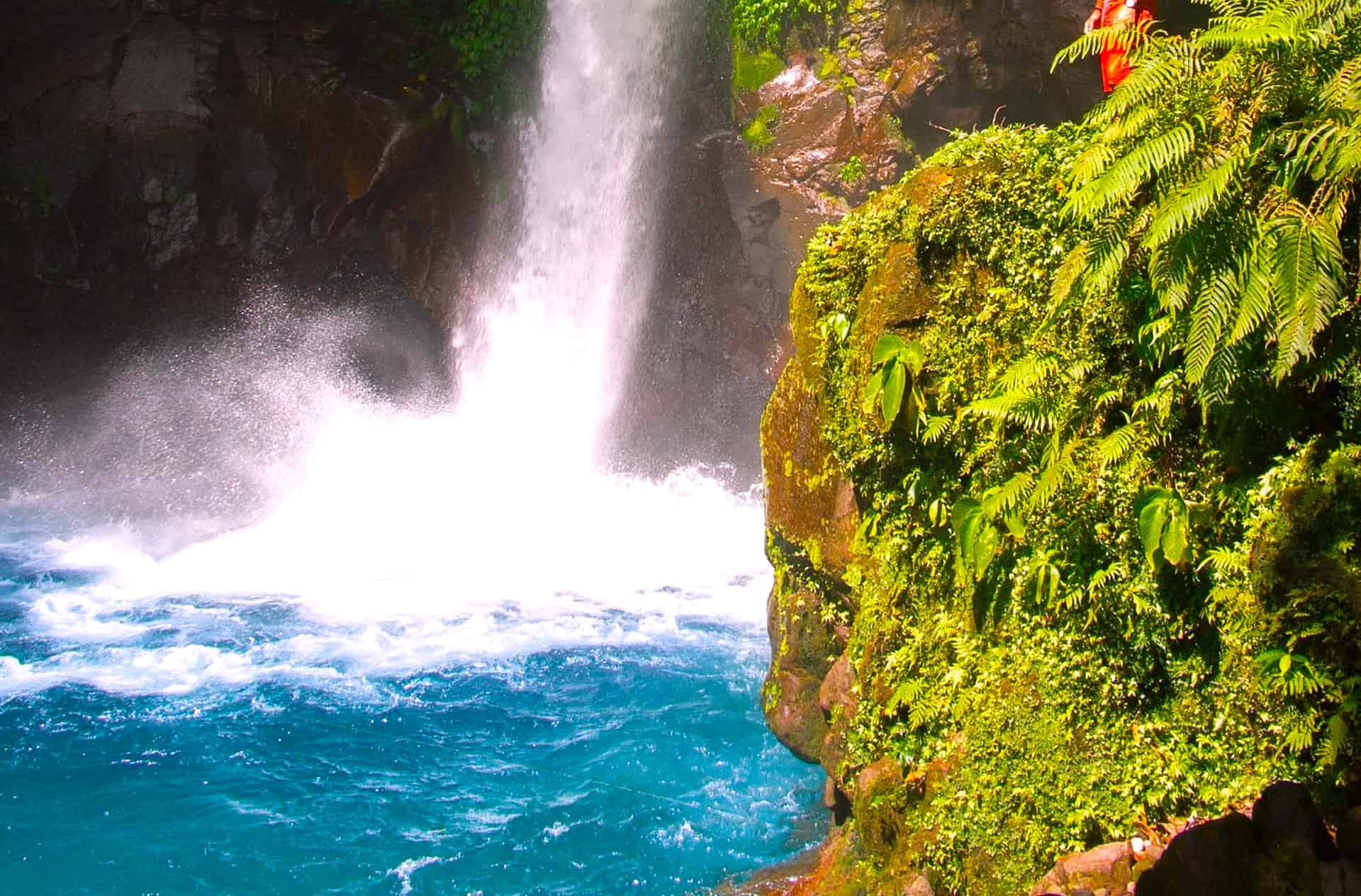
Top 10 Questions and Answers about Mindoro
- What is Mindoro Island known for?
- Mindoro is known for its diverse landscapes, which include beautiful beaches, lush mountains, and vibrant coral reefs. It's also famous for its rich cultural heritage, particularly the indigenous Mangyan people, and as a haven for biodiversity, including the endangered Mindoro tamaraw.
- Where is Mindoro Island located?
- Mindoro Island is located in the southwestern part of Luzon in the Philippines. It's separated from Luzon by the Verde Island Passage and lies directly to the north of the island of Palawan.
- What are the two provinces of Mindoro Island?
- Mindoro is divided into two provinces: Oriental Mindoro on the eastern part of the island and Occidental Mindoro on the western side.
- What are the popular tourist attractions in Mindoro?
- Popular attractions include Puerto Galera, known for its beautiful beaches and dive sites; Mount Halcon, a challenging destination for trekkers; Apo Reef Natural Park, one of the world's best diving spots; and the indigenous Mangyan villages.
- How can you travel to Mindoro?
- Mindoro can be reached via ferry from Batangas Port to various ports in Mindoro like Calapan and San Jose. There are also flights available to the island's airport, particularly in Oriental Mindoro.
- What activities can tourists do in Mindoro?
- Activities include beach-hopping, scuba diving, snorkeling, trekking, exploring the cultural heritage of the Mangyan people, and experiencing local festivals.
- What is the best time to visit Mindoro?
- The best time to visit is during the dry season from December to May, when the weather is more conducive to outdoor activities and beach excursions.
- What is the significance of the Mindoro tamaraw?
- The Mindoro tamaraw is a critically endangered buffalo species native to the island. It’s a symbol of Mindoro’s unique biodiversity and the focus of conservation efforts.
- What are the local dishes or cuisines one should try in Mindoro?
- Visitors should try local seafood dishes, traditional Filipino cuisine, and specialties like Mindoro’s own version of adobo and sinigang. The island also has a variety of tropical fruits.
- Are there any cultural practices unique to Mindoro?
- Yes, the Mangyan people have unique cultural practices, including traditional weaving, poetry known as Ambahan, and their own writing system. Local festivals also showcase unique cultural dances and music.
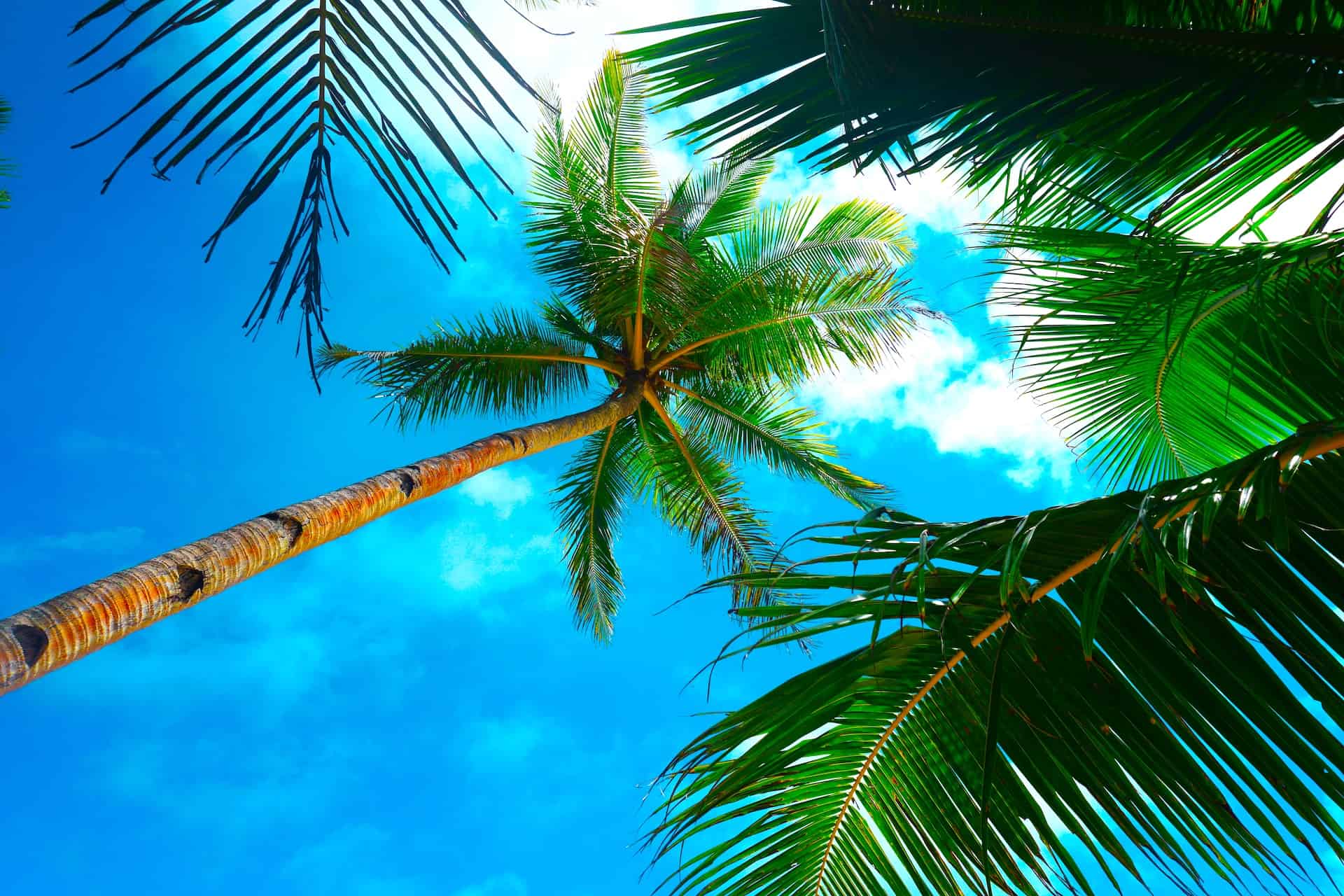
Why you should visit Mindoro
Discovering Mindoro: A Hidden Paradise in the Philippines
Introduction to Mindoro's Charms
Nestled in the heart of the Philippines, Mindoro Island emerges as a hidden gem waiting to be discovered. This enchanting island, divided into Oriental and Occidental regions, offers a unique blend of pristine natural beauty, rich cultural heritage, and exhilarating adventures. Whether you're a nature lover, culture enthusiast, or simply in search of a tranquil retreat, Mindoro promises an experience that will leave you captivated.
Breathtaking Natural Landscapes
One of the most compelling reasons to visit Mindoro is its stunning natural landscapes. The island boasts a diverse terrain, from the white sandy beaches of Puerto Galera to the majestic heights of Mount Halcon. For beach lovers, the crystal-clear waters and vibrant marine life offer a perfect setting for snorkeling and diving, especially in the renowned Apo Reef Natural Park. Hikers and trekkers will find Mount Halcon an exhilarating challenge, with trails winding through lush rainforests, offering glimpses of Mindoro's diverse flora and fauna.
Rich Cultural Tapestry
Mindoro is not just about natural beauty; it's also a cultural treasure trove. The island is home to the indigenous Mangyan people, known for their unique traditions, craftsmanship, and way of life. Visiting their villages offers a rare glimpse into a culture that has preserved its traditions over centuries. Mindoro's festivals, like the colorful Sanduguan Festival, showcase the island's rich history and cultural diversity, making it a vibrant place to explore and understand the Filipino heritage.
An Adventure Seeker's Haven
Exhilarating Outdoor Activities
Mindoro Island is an adventurer’s playground, offering a myriad of activities for thrill-seekers. The clear waters around the island are ideal for scuba diving and snorkeling, where you can explore vibrant coral reefs and diverse marine life. Apo Reef, in particular, is a world-renowned diving spot that should not be missed. For those who prefer land-based adventures, the trek to Mount Halcon provides an exhilarating experience, with its challenging trails and stunning panoramic views at the summit.
Unspoiled Beaches and Marine Wonders
The beaches in Mindoro are a slice of paradise. White Beach in Puerto Galera, with its soft white sand and azure waters, is perfect for relaxation and water sports. The more secluded beaches, like those in Bulalacao, offer a peaceful escape from the bustle of everyday life. The island's coastal areas are not just about leisure; they are also gateways to extraordinary marine ecosystems. A trip to Mindoro isn’t complete without experiencing the rich underwater world, including the chance to see rare species like sea turtles and a variety of tropical fish.
A Journey Through Mindoro's Flavors
Culinary Delights
Mindoro offers a culinary journey as diverse as its landscapes. The island's cuisine is a delectable mix of indigenous, Malay, and Spanish influences. Seafood, freshly caught and prepared, is a must-try. Local specialties like the Mindoro Sling, a unique fruit-based cocktail, and native dishes like adobo and sinigang provide a taste of the island's rich culinary heritage. Dining in Mindoro is not just about the food; it's an experience of the island's culture and traditions.
Local Markets and Culinary Tours
Visiting the local markets in Mindoro is an adventure in itself. These bustling hubs offer a variety of fresh produce, seafood, and local delicacies. For a more immersive experience, several culinary tours are available that take you through the traditional methods of cooking and food preparation, offering insights into the daily life and culinary practices of the Mindoreños.
Embracing Mindoro's Sustainable Tourism
Preservation and Eco-friendly Practices
Mindoro's approach to tourism is deeply rooted in sustainability and environmental preservation. The island's initiatives in eco-tourism aim to protect its natural resources while offering visitors an authentic and eco-conscious travel experience. By choosing eco-friendly accommodations and participating in responsible tourism activities, visitors contribute to the preservation of Mindoro’s natural beauty.
Community Involvement and Cultural Preservation
Tourism in Mindoro is not just about the visitor experience; it's also about community involvement and cultural preservation. Many tourism activities are developed in partnership with local communities, ensuring that the benefits of tourism are shared. Engaging with the local culture, visiting Mangyan villages, and purchasing handicrafts made by local artisans are ways tourists can support Mindoro's cultural heritage.

Mindoro Facts
1: Introduction to Mindoro
Nestled in the heart of Southeast Asia, amidst the vast archipelago of the Philippines, lies Mindoro - the seventh-largest island in this sprawling nation. Known for its picturesque landscapes, rich cultural tapestry, and vibrant biodiversity, Mindoro is not just a geographical entity but a kaleidoscope of nature and culture. This introduction aims to unfold the many layers of Mindoro Island, setting the stage for a deeper exploration of its unique attributes.
Mindoro is a tale of being divided into two halves - Oriental Mindoro in the east and Occidental Mindoro in the west. This division is not just administrative but also reflects the diverse topographies, cultures, and lifestyles found within the island. The northern coast of Mindoro, with its rugged terrain and lush greenery, sharply contrasts with the gentle serenity of the southern coast. It is this diversity that makes Mindoro a microcosm of the Philippines Mindoro itself.
Geographically, Mindoro Island is a gem. From the pristine beaches to the imposing mountains, the island offers a range of natural spectacles. The island's highest point, Mount Halcon, towers majestically, challenging trekkers and nature enthusiasts alike. The major towns of Mindoro, including Calapan in Oriental Mindoro and San Jose in Occidental Mindoro, serve as hubs of local culture and gateways to exploring the island's natural beauty. The provincial capital of Calapan, in particular, is not just an administrative center but a melting pot of the island's rich heritage and modern aspirations.
Mindoro forms a significant part of the Philippines' tourist map, drawing visitors from across the globe. The reason for this is not far to seek. The island boasts some of the most stunning beaches in the region, such as the famous White Beach in Puerto Galera, a haven for tourists seeking a blend of sun, sand, and sea. Puerto Galera, located in Oriental Mindoro, is not just a beach destination; it's a gateway to an array of water-based activities, including scuba diving, snorkeling, and island hopping. The crystal-clear waters and vibrant marine life of Apo Island and Apo Reef are a diver's paradise, showcasing some of the best underwater experiences in Southeast Asia.
The Mindoro Island experience is not confined to its natural beauty. The local culture, deeply rooted in the island's history, is a tapestry of indigenous traditions and modern influences. The music of Mindoro, especially its vocal music, resonates with the rhythms of the island's heart. These melodies, often accompanied by traditional instruments of Mindoro, tell tales of the island's past and present.
Connectivity to Mindoro has improved significantly over the years, making visits to Mindoro more convenient. Regular ferry services from Batangas Port Terminal to various towns in Mindoro have made the island accessible to both domestic and international tourists. Cebu Pacific and other airlines also offer daily flights to Mindoro, connecting it to Manila and other parts of the Philippines. For those seeking to explore further, short journeys from Mindoro to neighboring islands like Palawan and Boracay provide additional adventure options.
Mindoro is not just about leisure and tourism. The island plays a vital role in the Philippines' ecological balance. The Mindoro Occidental and Oriental Mindoro regions are hotspots of biodiversity, hosting unique species of flora and fauna. However, environmental challenges like the Oriental Mindoro oil spill have raised concerns about the preservation of this natural heritage. Efforts are ongoing to protect Mindoro's environment, ensuring that its beauty is maintained for future generations.
The everyday life in Mindoro is a blend of the traditional and the contemporary. From the bustling markets of major towns to the serene villages in other parts of the island, life in Mindoro is a colorful mosaic of experiences. The restaurants and hotels in Mindoro offer a taste of local flavors and hospitality, making every visit memorable.
In recent years, Mindoro's significance has been highlighted not just by its natural and cultural riches but also by its strategic location in Southeast Asia. The island serves as a bridge between the northern and southern parts of the Philippines, playing a crucial role in the country's maritime and cultural exchanges. The Mindoro Strait, the dagat sa pagitan ng Palawan at Mindoro (the sea between Palawan and Mindoro), is a vital waterway, facilitating trade and travel in the region.
Moreover, Mindoro's role in the Philippines' history is noteworthy. The island has witnessed several historical events that have shaped its current identity. From the struggles during colonial times to the challenges of modern development, Mindoro has stood as a resilient witness to the changing tides of time.
In conclusion, Mindoro is more than just an island in the Philippines; it's a vibrant community with a rich history, diverse culture, and stunning natural beauty. Whether it's the serene beaches, the lush mountains, the bustling towns, or the tranquil villages, Mindoro offers a slice of Philippine paradise. This article will explore these facets of Mindoro in detail, taking the reader on a journey through this magnificent island's heart and soul.
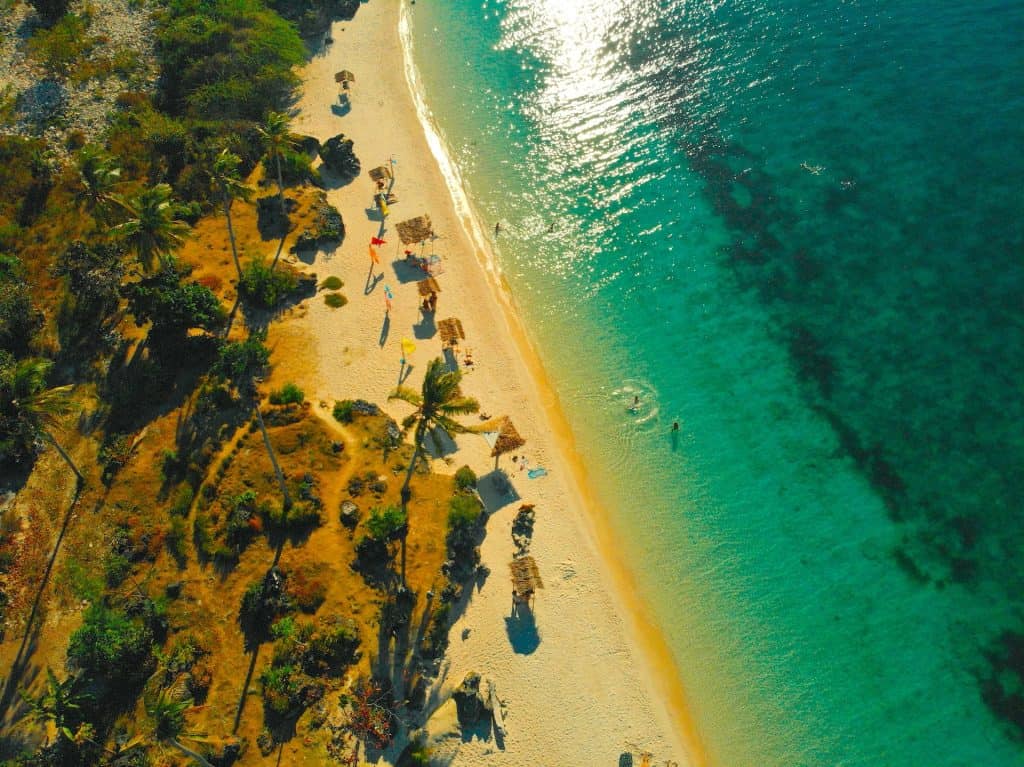
2: The Geography and Location of Mindoro Island
Mindoro, a verdant jewel in the Philippines' archipelago, is not only a geographical marvel but also a testament to nature's artistry. This section delves into the intricate geographical tapestry of Mindoro Island, unfolding its landscapes that range from mountainous terrains to serene coastal lines, thus offering a comprehensive understanding of this mesmerizing island.
Situated to the east, north, northeast, south and west of the Philippines' main island of Luzon, Mindoro forms a crucial part of the Philippine archipelago. The island is bounded by the Verde Island Passage to the north and northeast, the Mindoro Strait to the north the south, and the South China Sea to the west, presenting a diverse array of aquatic environments. As the seventh-largest island in the Philippines, Mindoro stretches across an area that encompasses both Oriental Mindoro and Occidental Mindoro provinces, each with its unique geographical characteristics.
The northern coast of Mindoro is a province renowned for its rugged and untamed beauty. Here, the terrain is marked by rolling sand hills and surrounded by dense forests, which gradually ascend to above sea level to meet the imposing Mount Halcon. As the island's highest point, Mount Halcon stands at over 8,000 feet above sea level, challenging adventurers and nature enthusiasts with its daunting trails and stunning vistas.
In contrast, the southern coast of Mindoro is characterized by gentle slopes that descend into idyllic beaches. White Beach in Puerto Galera, Oriental province, Mindoro, is a prime example of this, offering a picturesque setting with its powdery white sand and crystal-clear waters. This part of the south of the island is particularly famous for its vibrant coral reefs, making it a haven for snorkeling and scuba diving enthusiasts.
The island's topography is not just a matter of contrasts but also a confluence of various landscapes. The major towns of Mindoro, such as Calapan in Oriental Mindoro and San Jose in Occidental Mindoro, serve as vital centers of population and activity. These towns are not only administrative and economic hubs but also gateways to exploring the island's diverse environments.
Mindoro's geographical significance extends beyond its physical features. The island serves as a vital link between the northern and southern regions of the Philippines. Its strategic location has historically facilitated maritime trade and cultural exchanges, particularly through the Batangas Port, which has been a traditional entry point to the island. This port, located in the northeast of Mindoro, has played a pivotal role in the island's connectivity with other parts of the Philippines, including the capital city of Manila.
Additionally, Mindoro's location in Southeast Asia places it at the crossroads of diverse ecological and climatic zones. This positioning contributes to the island's rich biodiversity, making it a hotspot for endemic species and unique ecosystems. The Mindoro Island, with its varied climates, ranging from tropical rainforests to coastal mangroves, supports a myriad of plant and animal life, some of which are found nowhere else on Earth.
Mindoro's geography also shapes the lifestyle and culture of its inhabitants. The local communities, deeply intertwined with the land and sea, have developed practices and traditions that reflect their environment. The agricultural towns in the island's interior grow a variety of crops, benefiting from the fertile soil and favorable climate. Meanwhile, the coastal towns, such as Puerto Galera in Oriental Mindoro, have cultures deeply rooted in the sea, with fishing and marine activities forming the backbone of their livelihoods.
Furthermore, the geographical features of Mindoro have a direct impact on the island's economy. Agriculture, fishing, and tourism are the primary economic drivers, with each sector leveraging the natural resources and landscapes unique to the island. The beaches and marine reserves attract a significant number of tourists annually, contributing to the local economy and providing employment opportunities for the residents.
Mindoro's diverse geography also poses certain challenges, particularly in terms of environmental conservation and sustainable development. The island has faced issues like deforestation and environmental degradation, which threaten its ecological balance. Recent events, such as the oil spill in Oriental Mindoro, have highlighted the need for concerted efforts to protect the island's natural heritage.
In conclusion, the geography and location of Mindoro are not just physical attributes but integral components of the island's identity. From the towering peaks of Mount Halcon to the tranquil beaches of Puerto Galera, Mindoro's landscapes tell a story of natural beauty, cultural richness, and ecological diversity. As we continue to explore this magnificent island, it becomes evident that Mindoro is more than just a destination; it's a living, breathing entity that encapsulates the essence of the Philippines.
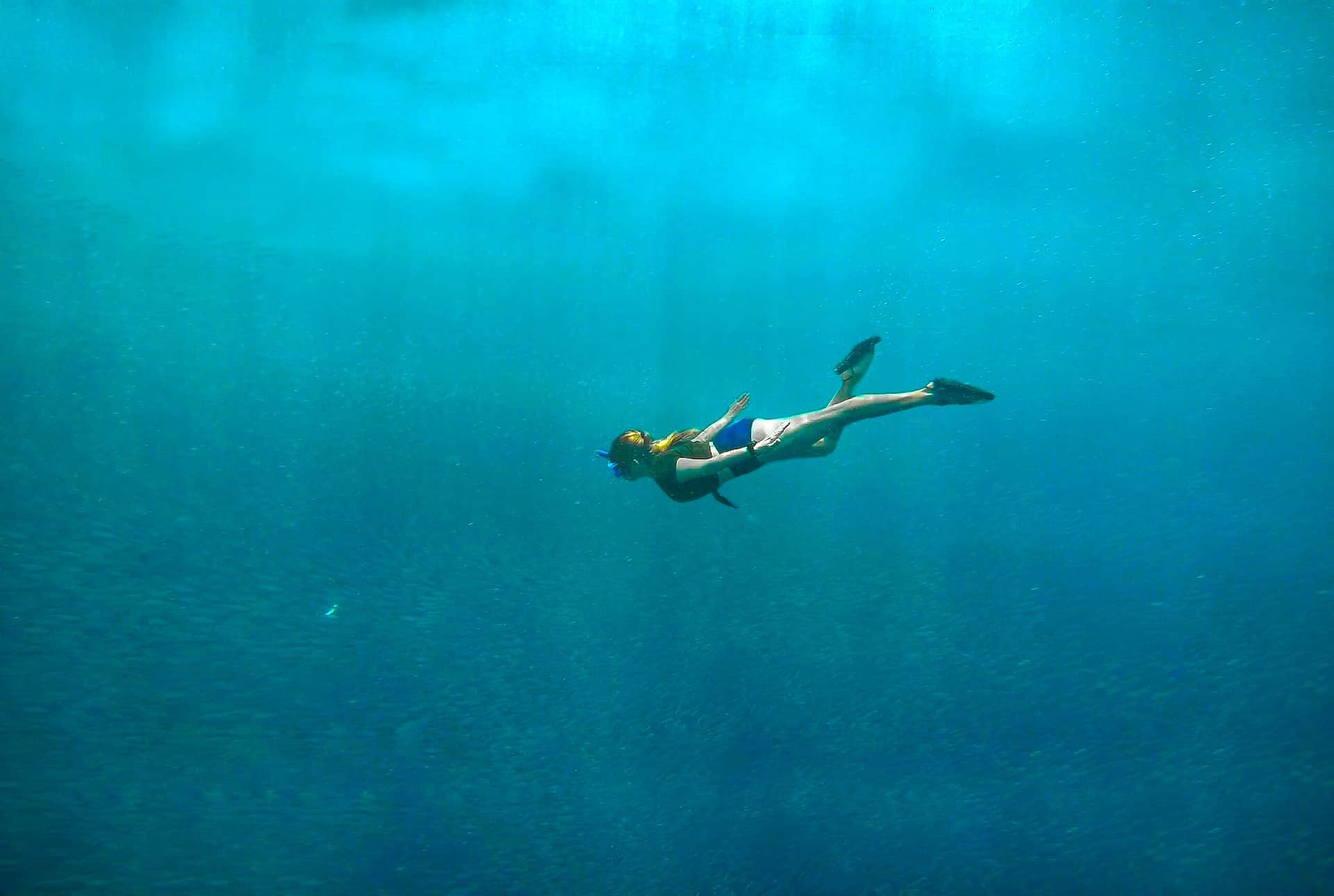
3: The History and Culture of Mindoro Island
Mindoro, an island steeped in history and rich in culture, offers a fascinating journey through time. This section delves into the island's historical legacy, exploring how its past has shaped the present cultural landscape of Mindoro Island, a place where tradition and modernity intertwine to create a unique cultural tapestry.
The history of Mindoro dates back to ancient times when it was inhabited by indigenous groups. These early settlers, known for their rich oral traditions and vibrant cultural practices, laid the foundation for the diverse cultural mosaic that Mindoro represents today. Over the centuries, Mindoro witnessed waves of influences from various external forces, including traders and colonizers, which further enriched its cultural fabric.
The cultural landscape of Mindoro is a reflection of its history. The island's indigenous communities, such as the Mangyans in Oriental Mindoro and the Tagalogs in Occidental Mindoro, have preserved their ancestral customs and practices. These communities, though modernizing, still hold on to traditions such as weaving, pottery, and the unique vocal music of Mindoro, an integral part of their cultural identity. The music of Mindoro, characterized by its distinct melodies and rhythms, serves as a window into the island's soul, echoing its stories and legends.
Mindoro's rich cultural heritage is not confined to its indigenous communities. The island has been a melting pot of different cultures, including those of Malay, Spanish, and American origins. This blend of influences is evident in the island's festivals, architecture, and even in the everyday lives of its people. The festivals of Mindoro, vibrant and colorful, are celebrations of its history and traditions, attracting tourists from across the globe.
One cannot talk about Mindoro's culture without mentioning its crafts and arts. The traditional crafts of Mindoro, from intricate beadwork to elaborate weaving, are not just products of artistic expression but are also imbued with cultural significance. These crafts are a testament to the islanders' deep connection with their heritage and their environment.
Mindoro's culture is also reflected in its culinary traditions. The island's cuisine is a delectable blend of indigenous, Spanish, and Asian influences, offering a gastronomic experience that is uniquely Mindorean. The local dishes, made from fresh produce from the island's farms and seas, are a celebration of Mindoro's bountiful resources.
The cultural landscape of Mindoro is also shaped by its religious practices. The island, like much of the Philippines, is predominantly Catholic, a legacy of its Spanish colonial past. However, Mindoro is also home to a variety of other religious practices, reflecting the island's diverse cultural makeup.
In recent years, Mindoro's culture has been influenced by modernity and globalization. This is evident in the island's urban centers, where traditional practices coexist with modern lifestyles. The young generation of Mindoreños, while embracing modernity, are also actively involved in preserving their cultural heritage, ensuring that the traditions of Mindoro are passed down to future generations.
The preservation of Mindoro's cultural heritage is crucial, not just for its historical significance but also for its role in promoting tourism. Mindoro's cultural attractions, from its historical sites to its traditional festivals, draw tourists who are keen to experience the island's unique cultural offerings.
However, the preservation of Mindoro's culture faces challenges, particularly from the pressures of modernization and environmental degradation. The Mindoro community, along with local and national authorities, is working towards finding a balance between development and cultural preservation, ensuring that Mindoro's cultural legacy endures.
In conclusion, the history and culture of Mindoro are as rich and diverse as its landscapes. From the ancient traditions of its indigenous communities to the modern rhythms of its urban centers, Mindoro offers a cultural experience that is both unique and enriching. As we continue to explore this beautiful island, we gain not just an understanding of its past and present but also a glimpse into the soul of the Philippines. Mindoro, with its blend of history, culture, and natural beauty, stands as a testament to the enduring spirit of the Filipino people.
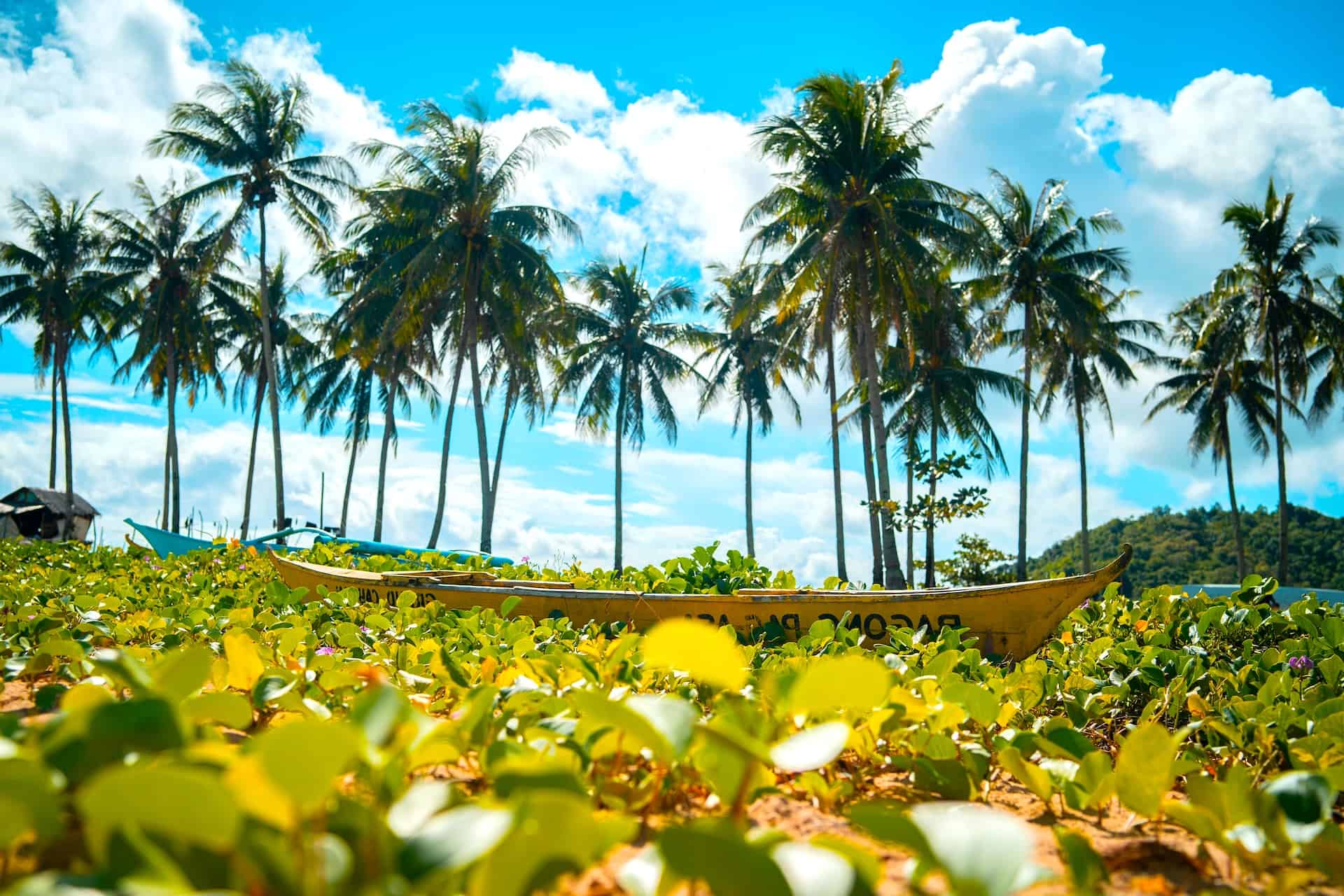
4: Provinces of Mindoro: A Tale of Two Regions
Mindoro Island, an emblematic mosaic of the Philippines' diverse geography and culture, is distinctly divided into two provinces: Oriental Mindoro and Occidental Mindoro. This section explores these two provinces, each a unique world in its own right, revealing how they contribute to the overarching identity of Mindoro.
Oriental Mindoro, on the eastern part of Mindoro Island, is known for its lush landscapes and vibrant biodiversity. The province's capital, Calapan, serves as a commercial and administrative center, bustling with activity and serving as a gateway to the rest of the island. Calapan, in Oriental Mindoro, balances modern development with the preservation of its rich cultural heritage, offering glimpses into both the island's history and its future aspirations.
The province's topography is marked by rolling hills and fertile plains, ideal for agriculture, which is a significant part of the local economy. Oriental Mindoro's agricultural towns, like Naujan and Bongabong, are vital contributors to the province's agrarian output, cultivating a variety of crops that support the local communities.
Oriental Mindoro is also home to some of Mindoro Island's most renowned tourist attractions. Puerto Galera, a coastal town in Oriental Mindoro, is famous for its stunning beaches, vibrant coral reefs, and world-class diving spots, such as Apo Reef. This town is not just a beach destination; it's an ecological wonder, showcasing the rich marine life of Mindoro. The tourist spots in Oriental Mindoro, including Puerto Galera, play a crucial role in the province's economy, attracting visitors from across the globe.
In contrast, Occidental Mindoro, on the western side of Mindoro Island, presents a different facet of the island's natural and cultural richness. The province is characterized by its rugged terrain, including mountains and remote beaches, offering a more untamed experience of Mindoro's natural beauty. Occidental Mindoro's major towns, like San Jose and Mamburao, though less developed than their counterparts in Oriental Mindoro, are rich in cultural heritage and natural resources.
San Jose in Occidental Mindoro, for instance, is a testament to the province's resilience and adaptability. As a town that has faced various environmental and economic challenges, San Jose continues to thrive, bolstered by its community's strong sense of identity and commitment to sustainable development.
The culture in Occidental Mindoro is deeply intertwined with its indigenous communities, such as the Iraya and Tadyawan tribes. These communities, through their traditional practices and customs, contribute significantly to the cultural tapestry of Mindoro Island. Their traditions, from weaving to ritual dances, are not just artistic expressions but are narratives of their history and relationship with the land.
Both Oriental and Occidental Mindoro, despite their differences, share a common thread – their commitment to preserving the environment. The provinces have been at the forefront of conservation efforts in the Philippines, particularly in response to challenges like the Oriental Mindoro oil spill. These efforts are crucial in safeguarding the island's ecological balance and ensuring the sustainability of its natural resources.
The division of Mindoro into Oriental and Occidental provinces is not just a political boundary; it represents a geographical and cultural dichotomy that adds to the island's allure. This division allows for a more nuanced exploration of Mindoro, with each province offering distinct experiences in terms of landscapes, weather, culture, and lifestyle.
The economies of Oriental and Occidental Mindoro, while rooted in agriculture and fishing, have diversified over the years. Tourism has emerged as a key economic driver, with both provinces leveraging their unique attractions to draw visitors. The beach resorts in Oriental Mindoro and the mountain retreats in Occidental Mindoro provide varied options for tourists, catering to different tastes and preferences.
The connectivity between the two provinces has improved over time, with better roads and transportation networks facilitating travel across Mindoro Island. This improved accessibility has not only boosted tourism but has also enhanced economic and cultural exchanges between the provinces, strengthening the overall cohesion of Mindoro.
In conclusion, the provinces of Oriental and Occidental Mindoro, each with its distinctive characteristics, collectively shape the identity of Mindoro Island. From the vibrant beaches of Puerto Galera in Oriental Mindoro to the rugged landscapes of San Jose in Occidental Mindoro, the island offers a spectrum of experiences that capture the essence of the Philippines. As we journey through Mindoro, we are reminded of the island's ability to harmonize diversity, creating a mosaic that is both complex and beautiful. The tale of these two provinces is a narrative of contrast and cohesion, highlighting Mindoro's unique place in the Philippines' archipelago.

5: Environmental Aspects and Challenges of Mindoro Island
Mindoro Island, a bastion of natural beauty in the Philippines, is not just a haven for tourists but also a sanctuary for an array of unique flora and fauna. This section delves into the environmental aspects of Mindoro, highlighting the island's rich biodiversity, the challenges it faces, and the efforts to preserve its natural heritage.
Mindoro's ecological significance is immense, being home to a variety of ecosystems, from mountainous rainforests to coastal mangroves. The island's diverse habitats support a wide range of species, many of which are endemic to the Philippines. The Mindoro tamaraw, a dwarf buffalo found only on the island, is one such species. This creature, emblematic of Mindoro's unique wildlife, is a symbol of the island's ecological richness.
However, the environmental landscape of Mindoro is not without its challenges. The island has faced numerous environmental issues, from deforestation and habitat loss to the impacts of climate change. These challenges threaten not only the island's biodiversity but also the livelihoods of the local communities who depend on the environment for their sustenance.
One of the most pressing environmental concerns in recent times has been the oil spill in Oriental Mindoro. This incident not only caused immediate ecological damage but also highlighted the vulnerability of Mindoro's marine environments. The spill affected a significant stretch of coastline, impacting marine life and disrupting the local fishing industry, a key economic sector for the island.
Efforts to address environmental challenges in Mindoro have been multifaceted. The local government, along with various non-governmental organizations, has been actively involved in conservation and rehabilitation initiatives. These efforts include reforestation projects, wildlife protection programs, and initiatives to promote sustainable fishing practices.
The conservation of Mindoro's natural resources is also tied to the promotion of ecotourism. By encouraging responsible tourism practices, Mindoro not only offers visitors the chance to experience its natural wonders but also raises awareness about the importance of environmental preservation. Ecotourism sites like Apo Reef in Occidental Mindoro and the mangrove reserves along the coast are examples of how tourism can contribute to conservation efforts.
The preservation of Mindoro's environment is also crucial for maintaining the island's cultural heritage. The indigenous communities of Mindoro, such as the Mangyans, have a deep spiritual connection with the land and its resources. For them, the environment is not just a source of livelihood but a part of their cultural identity. The degradation of Mindoro's natural environment, therefore, has far-reaching implications beyond the ecological impact.
Mindoro's geographical location also poses unique environmental challenges. As an island, it is particularly susceptible to the effects of climate change, such as rising sea levels and increased frequency of extreme weather events. These changes not only threaten the island's ecosystems but also pose risks to human settlements, particularly those along the northeast, north, and west coast.
The future of Mindoro's environment depends on the balance between development and conservation. While the island continues to develop economically, it is imperative that this growth is sustainable and does not come at the expense of the environment. Initiatives like community-based resource management and the integration of environmental education in local schools are steps in the right direction.
In conclusion, the environmental aspects of Mindoro are a crucial part of the island's identity. From its unique species and ecosystems to the challenges of conservation, Mindoro's environment is a complex tapestry that requires concerted efforts to protect and preserve. As Mindoro continues to evolve, the commitment to safeguarding its natural heritage will be key to ensuring that the island remains a beacon of biodiversity in the Philippines. The story of Mindoro is not just one of natural beauty but also of resilience and hope in the face of environmental challenges.
6: Tourism and Attractions of Mindoro Island
Mindoro Island, a gem in the Philippine archipelago, beckons travelers from around the world with its enchanting mix of natural beauty, cultural richness, and adventurous activities. This section will take you on a journey through Mindoro's tourism and attractions, showcasing why this island is a must-visit destination.
Renowned for its stunning beaches, lush landscapes, and vibrant marine life, Mindoro offers a plethora of experiences for every kind of traveler. The island's diverse attractions range from serene beach resorts to thrilling mountain treks, reflecting the island's geographical diversity.
Puerto Galera in Oriental Mindoro is a quintessential example of Mindoro's allure. This coastal town, famed for its idyllic beaches like White Beach, is a paradise for beach lovers and water sports enthusiasts. White Beach, with its powdery white sand and crystal-clear waters, is perfect for swimming, sunbathing, and relaxation. For those seeking more active pursuits, Puerto Galera offers excellent opportunities for scuba diving, snorkeling, and kayaking, especially around the vibrant coral reefs of Apo Island and Apo Reef.
Beyond the coastal allure, Mindoro is also a haven for trekkers and nature enthusiasts. The island's highest point, Mount Halcon, offers challenging hiking trails and breathtaking views, making it a popular destination for hiking enthusiasts. The journey to the summit is not just a physical challenge but also an opportunity to immerse oneself in Mindoro's lush rainforests and encounter its rich biodiversity.
The cultural attractions of Mindoro add another dimension to the island's tourism appeal. The indigenous communities of Mindoro, with their rich traditions and practices, offer a glimpse into the island's cultural heritage. Visiting these communities, tourists can experience the traditional music, crafts, and lifestyles of the Mangyan and other indigenous groups.
Mindoro's tourism is also characterized by its seasonal festivities and events. These celebrations, such as the vibrant festivals in major towns like Calapan and San Jose, are not just tourist attractions but also expressions of Mindoro's cultural identity. These festivals, often held in honor of patron saints or to celebrate the harvest, are a spectacle of color, music, and dance, providing visitors with a unique cultural experience.
The tourism infrastructure in Mindoro has developed significantly in recent years, with a range of accommodations available for visitors. From luxury resorts in Puerto Galera to quaint homestays in the interior towns, Mindoro caters to all preferences and budgets. The island's restaurants and eateries offer a taste of local flavors, serving dishes that are a blend of indigenous, Spanish, and Asian influences.
Mindoro's strategic location in the Philippines makes it easily accessible to both domestic and international travelers. Regular ferry services from Batangas Port and daily flights to Mindoro airport from Manila and other parts of the Philippines have made the island more accessible than ever. The connectivity not only boosts tourism but also facilitates the movement of goods and people between Mindoro and other parts of the country.
However, the growth of tourism in Mindoro comes with its challenges, particularly in terms of environmental sustainability. The increase in tourist arrivals has put pressure on the island's natural resources and ecosystems. The local government and tourism stakeholders are thus increasingly focusing on sustainable tourism practices, ensuring that tourism development does not compromise Mindoro's environmental integrity.
Ecotourism initiatives in Mindoro, such as community-led tours and conservation projects, are gaining popularity. These initiatives not only provide tourists with authentic and responsible travel experiences but also contribute to the conservation of the island's natural and cultural heritage.
In conclusion, Mindoro Island is a microcosm of the Philippines' diverse attractions. From its stunning beaches and rich marine life to its rugged mountains and vibrant cultural traditions, Mindoro offers a travel experience that is both enriching and exhilarating. As the island continues to develop as a tourist destination, the focus remains on balancing growth with sustainability, ensuring that Mindoro remains a pristine paradise for generations to come. The allure of Mindoro is not just in its physical beauty but in the experiences it offers, making every visit to the island a memorable adventure.
7: Transportation and Accessibility in Mindoro Island
Mindoro Island, a captivating destination in the Philippines, is not only rich in natural beauty and cultural heritage but also well-connected and accessible, making it a sought-after location for travelers and locals alike. This section delves into the transportation and accessibility aspects of Mindoro, highlighting how the island integrates modern connectivity with its rustic charm.
The gateway to Mindoro's myriad of experiences begins with its accessibility. Mindoro has evolved from a remote island to a well-connected destination, thanks to the development of transportation infrastructure over the years. The connectivity has opened up new avenues for tourism, trade, and cultural exchange, contributing significantly to the island's economic and social development.
One of the primary modes of transportation to visit Mindoro, is by sea. The Batangas Port, located on the northeastern coast of Mindoro, serves as the main entry point for most travelers and goods. Regular ferry services connect Batangas Port to various towns in Mindoro, such as Calapan in Oriental Mindoro and San Jose in Occidental Mindoro. These ferry services cater to both passengers and cargo, providing an essential link between Mindoro and the rest of the Philippines.
For those who prefer air travel, Mindoro is served by several daily flights. The Mindoro airport, located near the provincial capital of Calapan, connects the island to Manila and other major cities in the Philippines. Airlines like Cebu Pacific operate regular flights to Mindoro, making the island more accessible than ever. The convenience of air travel has not only boosted tourism but also facilitated business and personal travel for the residents of Mindoro.
Once on the island, getting around Mindoro is relatively straightforward. The road network in Mindoro, though not as extensive as in larger islands, is adequate for traveling between towns and tourist spots. Public transportation, in the form of buses and jeepneys, is readily available and provides an affordable option for both locals and tourists to navigate the island.
For short journeys within towns or to nearby attractions, tricycles and habal-habal (motorcycle taxis) are popular choices. These modes of transport offer a more intimate and flexible way to explore Mindoro, allowing travelers to experience the local lifestyle up close.
Rental services for cars, motorcycles, and bicycles are also available in major towns like Calapan and Puerto Galera. These services provide a more independent and personalized travel experience, ideal for those who wish to explore Mindoro at their own pace.
The transportation infrastructure in Mindoro not only facilitates mobility but also plays a crucial role in the island's economic activities. The movement of agricultural produce and goods from the interior towns to the ports is crucial for the local economy. The efficient transportation network ensures that these goods reach their markets timely, contributing to the livelihoods of the people in Mindoro.
Moreover, the accessibility of Mindoro has a direct impact on its tourism industry. The ease of travel to and within the island has made it a more attractive destination for tourists. The improved connectivity has also enabled the development of tourism infrastructure, such as hotels, resorts, and recreational facilities, further boosting the island's appeal.
However, the growth in transportation and accessibility also brings challenges, particularly in terms of environmental sustainability. The increase in traffic, both by sea and air, poses risks to Mindoro's natural environment. There is a growing emphasis on developing sustainable transportation options, such as electric vehicles and eco-friendly ferries, to mitigate these impacts.
In conclusion, the transportation and accessibility in Mindoro are integral to the island's charm and functionality. The development of connectivity has opened up new opportunities for Mindoro, making it more than just a remote island in the Philippines. As Mindoro continues to grow and develop, the focus remains on balancing the benefits of improved transportation with the need to preserve the island's natural beauty and cultural integrity. Mindoro, with its blend of modern accessibility and unspoiled landscapes, offers a unique experience that captivates the hearts of all who will visit mindoro.
8: Accommodations and Amenities in Mindoro Island
Mindoro Island, a destination that epitomizes the charm and diversity of the Philippines, offers an array of accommodations and amenities catering to the varied tastes and needs of its visitors. This section delves into the world of lodging and hospitality in Mindoro, showcasing how the island combines comfort and convenience with its unique cultural and natural backdrop.
The accommodations in Mindoro are as diverse as the island itself, ranging from luxurious resorts to budget-friendly homestays, ensuring that every traveler finds a place to stay that suits their preferences and budget. This variety not only caters to the influx of tourists but also reflects the island's commitment to inclusivity and hospitality.
In Oriental Mindoro, particularly in the tourist hub of Puerto Galera, resorts and hotels dot the coastline, offering stunning views of the sea and easy access to the beaches. These establishments range from high-end resorts with all-inclusive amenities to more modest, family-run hotels that offer a more personalized experience. The luxury resorts in Puerto Galera are known for their exceptional services, including spas, fine dining restaurants, and private beach access, providing guests with a taste of indulgence amidst the natural beauty of Mindoro.
For those seeking a closer connection to nature and a more authentic island experience, Mindoro also boasts eco-lodges and camping sites. Nestled in the island's lush landscapes, these accommodations offer a rustic yet comfortable stay, allowing guests to immerse themselves in the tranquility of Mindoro's natural environment.
The interior towns of Mindoro, such as Calapan and San Jose, offer a range of hotels and guesthouses that cater to business travelers and those visiting the island for cultural and familial reasons. These accommodations, while simpler than the beach resorts, are equipped with essential amenities, ensuring a comfortable stay for their guests.
In addition to hotels and resorts, Mindoro also offers homestays, a popular option for budget travelers and those looking to experience the local way of life. Homestays in Mindoro provide an opportunity for cultural exchange, as guests live with local families, learn about their traditions, and often enjoy homemade meals.
The dining options in Mindoro are as varied as its lodging. The island's cuisine, a blend of indigenous, Spanish, and Asian influences, can be savored in various settings, from upscale restaurants in the resorts to local eateries in the towns. Seafood, freshly caught from the surrounding waters, is a staple in Mindoro's culinary scene, featured prominently in many local dishes.
Puerto Galera, known for its vibrant nightlife, offers a plethora of dining and entertainment options. The beachfront is lined with bars and restaurants, where visitors can enjoy live music, dance, and socialize, all while savoring delicious food and drinks.
In terms of amenities, Mindoro is well-equipped to meet the needs of its visitors. The towns have numerous shops, markets, and convenience stores, providing easy access to everyday necessities. For those who require connectivity, many hotels and resorts offer Wi-Fi and other communication services, ensuring that guests stay connected with the world.
The healthcare facilities in Mindoro, including hospitals and clinics, are capable of handling basic medical needs. In case of emergencies, there are arrangements for quick transportation to larger medical centers in nearby cities.
Transportation services in Mindoro, such as car rentals, motorbike hire, and tricycle taxis, are readily available, making it easy for visitors to explore the island at their own pace. Many accommodations also offer tour booking services, facilitating excursions to visit Mindoro's various attractions.
In conclusion, the accommodations and amenities in Mindoro reflect the island's blend of natural beauty, cultural richness, and modern convenience. From luxurious beach resorts to cozy homestays, Mindoro offers a range of lodging options that cater to different tastes and budgets. Combined with its diverse culinary scene and ample amenities, Mindoro ensures that every visitor's stay is comfortable, enjoyable, and memorable. As Mindoro continues to develop its tourism infrastructure, the focus remains on providing quality services while preserving the island's unique charm and ecological integrity.
9: The Economic Landscape of Mindoro Island
Mindoro Island, a vibrant component of the Philippines’ economic tapestry, presents a unique blend of traditional and modern economic activities. In this section, we explore the multifaceted economy of Mindoro, examining how its natural resources, agricultural practices, and burgeoning tourism sector contribute to the livelihoods of its inhabitants and the island's overall economic health.
Mindoro's economy is deeply rooted in agriculture, a sector that remains the backbone of the island's livelihood. The fertile lands of Mindoro, particularly in the plains and valleys of Oriental Mindoro, are ideal for farming. Rice, the staple food of the Philippines, is cultivated extensively, alongside other crops such as corn, vegetables, and tropical fruits like bananas and mangoes. These agricultural activities not only feed the local population but also contribute to the food supply of neighboring regions.
In addition to crop farming, livestock and poultry farming are also significant contributors to Mindoro's agricultural sector. The island is known for its native breeds of chickens and the Mindoro tamaraw, a dwarf buffalo indigenous to the island, which has cultural and economic significance.
Another vital component of Mindoro's economy is its fishing industry. The surrounding waters of Mindoro, rich in marine biodiversity, provide a bountiful harvest for local fishermen. Towns along the coast, such as Puerto Galera in Oriental Mindoro and San Jose in Occidental Mindoro, are centers of fishing activity. The fishing industry not only supports the local economy but also plays a crucial role in the food security of the island.
The tourism sector in Mindoro has seen significant growth over the years, becoming a major economic driver for the island. The natural beauty of Mindoro, with its stunning beaches, lush mountains, and rich cultural heritage, attracts tourists from around the world. This influx of visitors has spurred the development of a wide range of tourism-related businesses, including hotels, resorts, restaurants, and tour services. The growth of tourism has provided employment opportunities and has stimulated other sectors of the economy, such as transportation and retail.
Puerto Galera, a prime tourist destination in Oriental Mindoro, exemplifies the economic impact of tourism. The town, renowned for its beautiful beaches and diving spots, has a thriving tourism industry that supports many local businesses and contributes significantly to the town's economy.
Mindoro's economic landscape is also characterized by its small and medium-sized enterprises (SMEs). These businesses, ranging from handicraft producers to local food manufacturers, play a crucial role in the island's economy. They not only provide livelihoods for many Mindoreños but also contribute to the preservation of the island's cultural heritage through their products.
The development of infrastructure in Mindoro has been crucial in supporting its economic activities. Improved roads, ports, and communication networks have facilitated the movement of goods and people, both within the island and with the rest of the Philippines. The connectivity has opened up new markets for Mindoro's products and has made the island more accessible to tourists.
However, Mindoro's economy faces several challenges. Environmental issues, such as the impact of the Oriental Mindoro oil spill, have threatened the island's natural resources, which are vital to both agriculture and tourism. The need for sustainable economic practices is increasingly recognized as essential for the long-term health of Mindoro's economy.
In response to these challenges, there is a growing emphasis on sustainable development in Mindoro. Efforts are being made to balance economic growth with environmental conservation. Initiatives such as ecotourism and organic farming are being promoted, not only as means to preserve Mindoro's natural environment but also as viable economic activities.
In conclusion, the economy of Mindoro is a dynamic and integral part of the island's identity. The blend of agriculture, fishing, tourism, and SMEs creates a diverse economic landscape that supports the livelihoods of the Mindoreños. As Mindoro continues to evolve, the focus on sustainable development and the preservation of its natural and cultural assets will be key to ensuring a prosperous future for the island. Mindoro, with its rich resources and resilient people, stands poised to face the challenges and opportunities of the future, maintaining its role as an important economic player in the Philippines.
10: Comparative Analysis with Other Philippine Islands
Mindoro Island, a distinctive and captivating part of the Philippines' archipelago, stands out for its unique blend of natural beauty, cultural richness, and economic diversity. In this section, we delve into a comparative analysis of Mindoro with other well-known Philippine islands such as Palawan, Boracay, and Coron, shedding light on what sets Mindoro apart and how it complements the broader tapestry of the Philippine islands.
Mindoro and Palawan: A Tale of Two Neighbors
Mindoro and Palawan, neighboring islands in the Philippines, each present a different facet of natural splendor. Palawan province, known for its its weather, picturesque landscapes and biodiversity, is often regarded as a haven for nature lovers and adventure seekers. It boasts the famous underground river in Puerto Princesa and the mesmerizing lagoons of El Nido, attracting tourists from all corners of the globe.
Mindoro, while sharing some similarities in terms of ecological diversity, offers a more varied experience. The island's mountainous regions, like Mount Halcon, provide opportunities for trekking and exploration, a contrast to Palawan's more marine-focused attractions. Additionally, Mindoro's cultural landscape, particularly the indigenous Mangyan communities, adds a unique cultural dimension that differs from Palawan's more tourism-centric focus.
Mindoro and Boracay: Contrasting Tourist Paradises
Boracay, one of the Philippines' most famous tourist destinations, is renowned for its vibrant nightlife, pristine beaches, and leisure activities. It is often the go-to choice for tourists seeking a lively beach experience, with its array of resorts, restaurants, and bars.
Mindoro, on the other hand, offers a more diverse tourist experience. While Puerto Galera in Oriental Mindoro rivals Boracay with its beautiful beaches and diving spots, Mindoro also offers quieter, more secluded areas for those seeking tranquility. Furthermore, Mindoro's ecotourism initiatives, such as the conservation efforts in Apo Reef and the indigenous cultural experiences, provide a different kind of attraction compared to Boracay's more commercialized setting.
Mindoro and Coron: Diverse Marine Worlds
Coron province, part of the Palawan province, is another jewel in the Philippines’ tourism crown. Famous for its world-class wreck diving sites and stunning karst landscapes, the province of Coron province is a favorite among divers and nature enthusiasts.
Mindoro’s comparison with Coron is particularly interesting in terms of their marine offerings. While Coron is celebrated for its historical shipwrecks and clear-water lakes, Mindoro’s Puerto Galera is renowned for its vibrant coral reefs and diverse marine life. The diving experiences in Mindoro, especially around Apo Reef and Apo Island, are considered some of the best in the Philippines, offering a different but equally captivating underwater adventure.
Economic and Cultural Comparisons
Economically, Mindoro differs from these islands due to its strong agricultural base. While Palawan and Boracay rely heavily on tourism, Mindoro enjoys a more diversified economy, with significant contributions from agriculture and fishing. This economic diversity not only provides resilience against the fluctuating tourism market but also contributes to a more balanced development of the island.
Culturally, Mindoro's rich heritage, influenced by its indigenous communities, stands distinct. The Mangyan people, with their unique traditions and crafts, offer a cultural experience that is less prevalent in Palawan, Boracay, or Coron. This cultural richness adds to Mindoro's appeal, offering visitors an opportunity to engage with the island's heritage in a meaningful way.
Environmental Sustainability and Challenges
In terms of environmental challenges, all these islands face similar threats such as climate change, pollution, and over-tourism, which can strain their natural resources. Mindoro's experiences, especially with issues like the Oriental Mindoro oil spill, highlight the need for sustainable practices in tourism and development. This need resonates with the other islands as well, each grappling with balancing development and environmental conservation.
Conclusion
In conclusion, Mindoro, while sharing some commonalities with Palawan, Boracay, and Coron, carves out its unique niche in the Philippine archipelago. Its blend of natural beauty, cultural diversity, and economic resilience makes it a compelling destination that complements the more renowned islands. The comparative analysis reveals that each island, with its distinct offerings, contributes to the rich mosaic of the Philippines, making it one of the most diverse and captivating countries in Southeast Asia. Mindoro, with its own unique allure, stands as a testament to the Philippines' multifaceted charm.
11: Recent Developments and Future Outlook in Mindoro Island
Mindoro Island, a dynamic and evolving part of the Philippine archipelago, has witnessed significant changes and developments in recent years. This section provides insights into the recent advancements that have shaped Mindoro, along with a projection of what the future might hold for this diverse and vibrant island.
Recent Developments in Mindoro
In recent years, Mindoro has seen a range of developments, particularly in infrastructure, tourism, and environmental conservation. These changes are shaping the island's trajectory, influencing its social, economic, and ecological landscape.
One of the key areas of development has been in infrastructure. The improvement of road networks, expansion of the Mindoro airport, and enhancement of port facilities in Batangas and Puerto Galera have greatly improved connectivity within Mindoro and with the rest of the Philippines. These infrastructural advancements have facilitated easier and more efficient transportation of goods and people, boosting local businesses and enhancing the tourism experience.
The tourism sector in Mindoro has also experienced significant growth. New resorts, eco-tourism sites, and tourist attractions have been developed, broadening the range of options available to visitors. This growth in tourism infrastructure is accompanied by a heightened focus on sustainable practices to ensure the long-term preservation of Mindoro’s natural beauty.
Mindoro's environmental conservation efforts have gained momentum in response to the challenges posed by climate change and human activities. Initiatives such as the reforestation of denuded areas, protection of marine sanctuaries like Apo Reef, and the conservation of endangered species like the Mindoro tamaraw reflect a growing commitment to environmental stewardship.
Economic Developments
The economic landscape of Mindoro has been evolving, with a noticeable shift towards diversification. While agriculture remains a cornerstone of the economy, there is an increasing emphasis on developing other sectors such as tourism, renewable energy, and small-scale industries.
Mindoro's agricultural sector has seen advancements in terms of modern farming techniques and the introduction of high-yield crop varieties. These improvements have increased productivity and sustainability, contributing to food security on the island and in neighboring regions.
The renewable energy sector in Mindoro has also seen growth, with investments in solar and wind energy projects. These initiatives not only provide sustainable energy solutions but also create job opportunities for the local population.
Cultural and Social Developments
Culturally, Mindoro continues to celebrate and preserve its rich heritage. Efforts to promote the arts, crafts, and traditions of the indigenous Mangyan communities have increased, ensuring that these cultural treasures are preserved for future generations.
Education and healthcare in Mindoro have also seen improvements, with the establishment of new schools, colleges, and healthcare facilities. These developments are crucial for enhancing the quality of life for Mindoreños and are integral to the island's social development.
Future Outlook for Mindoro
Looking towards the future, Mindoro is poised for continued growth and development, albeit with a conscious effort towards sustainability and ecological balance. The tourism sector is expected to expand further, with a focus on eco-friendly practices and responsible tourism that respects the island’s natural and cultural heritage.
The economic diversification of Mindoro is likely to continue, with an emphasis on sustainable practices in agriculture, fishing, and other industries. The integration of technology and innovation in these sectors is expected to drive efficiency and sustainability.
In terms of environmental conservation, the future outlook includes continued efforts in protecting Mindoro's natural resources. This involves not only conserving existing ecosystems but also rehabilitating areas that have been degraded. Community involvement and education will play a crucial role in these conservation efforts.
Mindoro’s cultural heritage, particularly the traditions of its indigenous communities, is expected to gain more recognition and support. Preserving and promoting these cultural assets will enrich the island's identity and contribute to a more inclusive and dynamic community.
Conclusion
In conclusion, Mindoro Island stands at a crossroads of tradition and modernity, facing the future with optimism and resilience. The recent developments in infrastructure, economy, and conservation have laid a strong foundation for sustainable growth. As Mindoro continues to evolve, it will undoubtedly retain its unique charm, offering a blend of natural beauty, rich culture, and economic vitality. The future of Mindoro looks bright, with a focus on sustainable development, cultural preservation, and community empowerment, ensuring that the island remains a treasured part of the Philippines for generations to come.
12: The Cultural Tapestry and Community Life in Mindoro Island
Mindoro Island, nestled in the heart of the Philippine archipelago, is not just a land of breathtaking landscapes but also a vibrant tapestry of cultures and communities. This section explores the rich cultural heritage and the community life in Mindoro, shedding light on how these aspects form the soul of the island.
The Richness of Mindoro's Cultural Heritage
Mindoro's cultural landscape is a blend of its indigenous roots and the influences from various periods in its history. The indigenous groups, particularly the Mangyans in Oriental Mindoro, have played a significant role in shaping the cultural identity of the island. Their traditions, art, and way of life offer a window into the island's past and its connection to the natural world.
The Mangyans, known for their intricate weaving and unique writing system, continue to practice their ancestral customs, preserving a vital part of Mindoro's heritage. The annual festivals in Mindoro, where Mangyan dances, music, and crafts are showcased, are not just tourist attractions but also a celebration of the island's indigenous culture.
In addition to the indigenous heritage, Mindoro has been influenced by various external forces throughout its history. The Spanish colonization left its mark on the island's architecture, cuisine, and religious practices. This blend of indigenous and colonial influences has created a unique cultural milieu that sets Mindoro apart from other islands in the Philippines.
Community Life in Mindoro
Life in Mindoro is characterized by a strong sense of community. In both rural and urban areas, there is a close-knit fabric of social interactions and relationships. The local festivals, a central aspect of life in Mindoro, are not just occasions for celebration but also for strengthening community bonds.
In the rural areas of Mindoro, community life is often centered around agricultural activities. The farming and fishing villages operate on a cooperative model, with residents sharing resources and labor. This communal way of life extends to other aspects of living, including childcare, festivities, and community decision-making.
Urban areas in Mindoro, like the provincial capital Calapan, while more modern, still retain a strong sense of community. The local markets, churches, and schools are places where people gather, share news, and support each other. The sense of belonging and mutual support in these communities is a testament to the resilience and warmth of the Mindoreños.
Challenges and Opportunities
Despite its rich cultural heritage and strong community life, Mindoro faces challenges, particularly in terms of preserving its traditions in the face of modernization and globalization. The younger generation, influenced by global trends and digital technology, sometimes drifts away from traditional practices. However, this also presents an opportunity for a fusion of the old and the new, creating a dynamic cultural landscape that is both traditional and contemporary.
Efforts are being made to preserve Mindoro's cultural heritage through education, community programs, and tourism initiatives. Schools in Mindoro include local history and culture in their curriculum, ensuring that the younger generation appreciates and understands their heritage. Community programs that promote traditional arts and crafts provide a means for the older generation to pass on their skills and knowledge.
Tourism, if managed sustainably, can be a powerful tool for cultural preservation. By showcasing Mindoro's traditions, music, and arts to visitors, there is an opportunity to generate interest and support for these cultural assets. This not only contributes to the island's economy but also raises awareness about the importance of preserving Mindoro's unique cultural identity.
Conclusion
In conclusion, the cultural tapestry and community life in Mindoro are integral to its identity. The richness of its traditions, the resilience of its communities, and the warmth of its people make Mindoro a unique and enchanting place in the Philippines. As the island navigates the challenges of the modern world, it holds onto its cultural roots, blending them with new influences to create a vibrant and evolving cultural landscape. Mindoro, with its blend of history, tradition, and community spirit, continues to be a beacon of cultural richness in the Philippine archipelago. Pandan Island.
Sources: https://en.wikipedia.org/wiki/Mindoro
